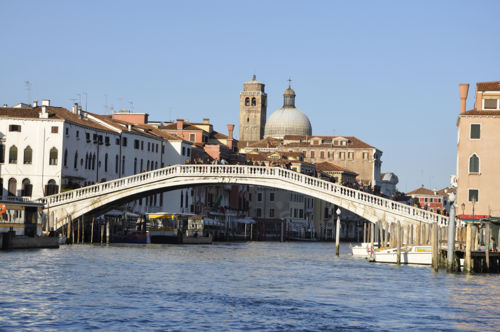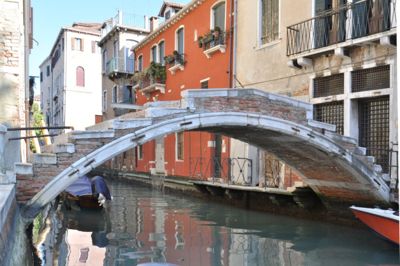Introduction to Venice
Da Venicewiki, il wiki di Venezia
An orientation for visitors arriving for the first time.
Are you planning your first trip to Venice? If so, the getting started guide Venicewiki.org it will make your task easier.
As Luigi Barzini wrote in an article in The New York Times April 30, 1982 [1]:
Venice is undoubtedly the most beautiful city built by man, and thousands of his countrymen have fallen in love with it through many centuries. But nobody ever fell in love with it at a distance, merely from photographs of its monuments and palazzi. What is irresistible are the ever-present pleasures of life: the swinging steps of pretty girls who have matured walking up and down the arched stone bridges, the delicious food, the cordiality of the people, the festas, the leisurely promenade under the procuratie in the piazza at the end of the day, the open-air concerts in the evening, the ever-changing crowds of foreign visitors. These are surely enough to fall in love with, to make one return time and again; but just as surely they are not enough to make one dedicate years to the Sisyphean task of writing the city's history.
In its heyday, the republic, which was by no means a modern democracy, was ruled by a hereditary aristocratic oligarchy of merchants. They had the unerring taste to build palazzi and churches, as well as villas on their mainland estates, that still look unsurpassably beautiful to us today, and to commission works of art that are among the most splendid in the world.
For many centuries the oligarchy was religiously committed to preserving and increasing not only their own and their city's wealth (which they did very successfully) but above all the power, dignity, independence, glory and fame of the republic. They conducted public business with the public good in mind and not only the welfare of their class. They died at war without fear. Liberty (both the republic's liberty and the liberty of individuals protected by the laws and by a complex system of checks and balances) was their own and the common people's stubborn preoccupation. At the Battle of Agnadello in 1509, facing a superior invading French army which eventually slaughtered them, the Venetian soldiers cried out, Marco, Marco, invoking their saint, of course, but also Libertà, libertà and Italia, Italia. They knew they were fighting and dying for their liberty but also for that of a shadowy divided country which then existed only in people's hopes.
These magnificent ancestors left us a heritage to be shown at all humanity.
Venice it is an island city, whose streets are passable only on foot, so only a Piazzale Roma you come with the car.
The historic center is a tightly integrated set of 117 small islands that are linked by more than 410 Bridges. Every time you cross a bridge, leaving an island to get into another.
The entire center of the city only covers about 725 hectares, which is a bit 'more than twice the size of Central Park in New York or London's Hampstead Heath, but it is a concentration of works of art that has no equal in the world.
Venice historical center is divided into six Sestieri: Cannaregio, Castello, Dorsoduro, San Polo, Santa Croce and San Marco.
Venicewiki.org accompany you in all the places known and even lesser known ones as it is written by the Venetians who know both places that the millennial history that distinguishes them.
Our guide will lead you to discover Campi and Campielli, Bridge and routes, Monuments and Churches, but also Shops, Restaurants & trattorias, Osterie e bacari] to the premises where you eat the typical cicchetti and every Venetian specialties, or take you to make an excursion boat rowing by finding hidden corners that you would not see on foot.

